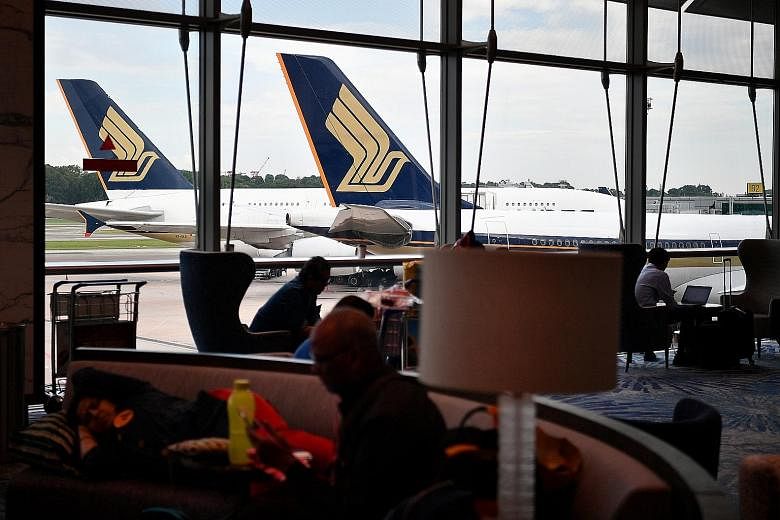Stronger passenger and cargo revenues helped Singapore Airlines (SIA) beat expectations in the fourth quarter.
It chalked up net profit of $181.8 million for the three months to March 31, reversing from a loss of $138.3 million a year earlier.
That quarter last year had also been dragged down by SIA Cargo's $132 million provision for competition-related fines.
SIA's full-year earnings of $893 million is the highest since 2011 and easily beat a Bloomberg consensus estimate of $717.46 million.
Revenue in the fourth quarter rose 8.3 per cent to $4.02 billion.
Earnings per share clocked in at 15.4 cents compared with a loss per share of 11.7 cents previously.
-
AT A GLANCE
REVENUE: $4.02 billion (+8.3%)
NET PROFIT: $181.8 million (comparison not meaningful)
DIVIDEND PER SHARE: 30 cents (+172.7%)
While expenditure rose 3.2 per cent to $3.8 billion due to costlier fuel, operating profit was significantly higher at $214.5 million against $27.6 million a year earlier.
The board has recommended a final dividend of 30 cents a share, nearly triple the 11 cents a share previously.
While there are stronger advance passenger bookings for the coming months and yields continue to stabilise, competition remains in key markets, as do cost pressures, the airline said yesterday.
Jet fuel prices have started to climb sharply, while rising interest rates could also add to headwinds, some analysts have warned.
At the operating level, all SIA's units were profitable in the quarter.
The parent airline swung into the black with an operating profit of $137 million, versus a loss of $41 million a year ago. Traffic grew by 1.4 per cent and passenger yields improved by 1 per cent.
Increased demand helped SIA Cargo erase losses to post an operating profit of $28 million while yields jumped by 8.5 per cent.
Regional carrier SilkAir's operating profit slumped from $27 million last year to $3 million, due to higher costs like fuel, handling charges and landing and parking expenses. Its yields contracted 11.4 per cent.
Budget carrier Scoot reported a $7 million rise in operating profit to $29 million, while SIA Engineering's operating profit declined by $4 million to $20 million.
Full-year net profit soared to $892.9 million, up from $360.4 million, while revenue increased 6.3 per cent to $15.81 billion on the back of higher contributions from all its business segments.
Operating profit came in at $1.05 billion. Group expenditure increased 3.5 per cent to $14.75 billion as average jet fuel prices were up 18 per cent, but this was partly offset by a hedging gain.
The airline will add capacity of 5 per cent in this year, including restarting non-stop flights to New York and Los Angeles.
Keen competition forced the group to start a three-year transformation programme last year, which has shown "good progress", SIA said. "The next two years will further build on initiatives around enhancements to the customer experience, revenue growth and improvements in operational efficiency."
Other airlines such as Hong Kong's Cathay Pacific have also embarked on transformation programmes as rivals from the Gulf and China have made the operating environment more challenging.
SIA shares closed up 14 cents to $11.14 yesterday before the results were released.

